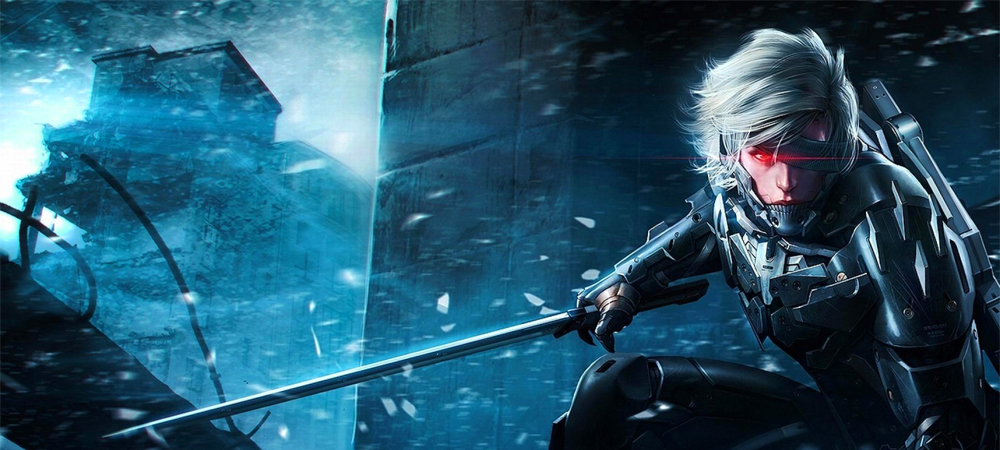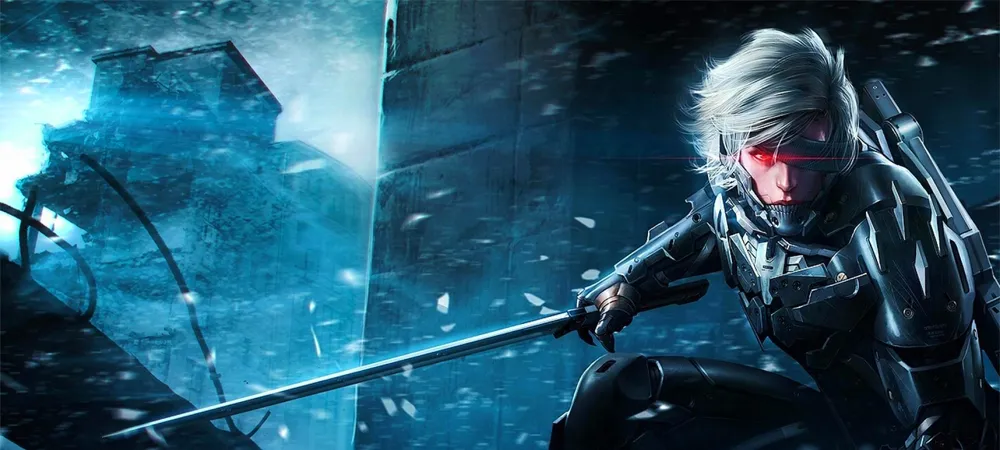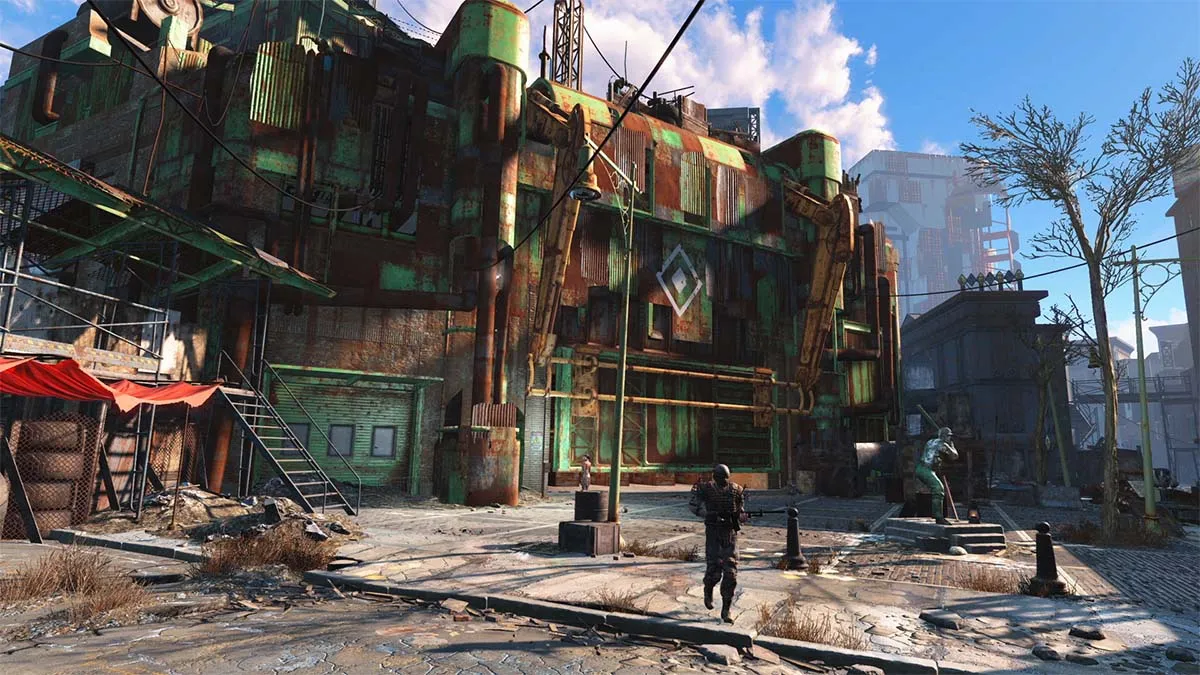Not Solid, but razor sharp
Four years following the events of Metal Gear Solid 4: Guns of the Patriots, the world is still recovering from the fall of the War Economy, a program created to ensure a constant level of conflict on the globe for the purposes of profit and control. In the aftermath, the cyborg soldiers of the private military companies which functioned as the lifeblood for this system were cast into the wind, searching for a purpose now that the wars they were built to fight no longer exist.
Some, such as Raiden and the company employing him (Maverick Security Consulting, Inc.), have turned their attention to security and training in developing nations, seeking to maintain the peace. When another outfit assassinates the Prime Minister of a government Maverick has a contract with, Raiden begins a campaign of vengeance which reveals a plan to jump start the War Economy back into operation and a sinister program of experimentation he is all too familiar with already.

Metal Gear Rising: Revengeance (PlayStation 3, Xbox 360 [reviewed])
Developer: Platinum Games
Publisher: Konami
Released: February 19, 2013
MSRP: $59.99
In terms of contributing to the Metal Gear canon, Revengeance isn’t doing much which seems significant. It feels as though it exists in a bubble all its own, a single instance where a crisis arises and is overcome, and the impact of these events feel largely resolved by the conclusion. Only one secondary character from Metal Gear Solid makes an appearance while passing references to other characters and events aren’t common. These often seem too subtle to expect players unfamiliar with the series to understand, but present no problems in understanding the plot, which is almost alarming in its straightforwardness for a title bearing the Metal Gear name.
Frequent attempts are made to reinforce the idea that Rising belongs alongside the Solid series with tropes familiar to fans. Recurring elements abound, from the composition of cutscenes and the ubiquitous punctuation marks over heads to the thematically linked team of enemy cyborgs, The Winds of Destruction. Kojima’s influence on the story is most readily apparent in its themes, recycling ideas about the power and transmission of ideals found throughout the Metal Gear franchise.
While certainly befitting what has come before, it’s unfortunate that these well-worn concepts steal the thunder of a poignant mid-game sequence where the narrative does everything short of outright breaking the fourth wall to force the player to evaluate the violence they have engaged in and the pleasure they received as a consequence. At a time in our industry when games are under scrutiny for the violent content they contain and the effect it may have on society, Revengeance arrives at the perfect opportunity to address this. But it may inadvertently send the wrong message, as the horror of the realization is quickly consumed entirely by a gleeful acknowledgement and acceptance of Raiden’s monstrous nature, launching into even greater depths of violence.
To do anything else would probably have been disingenuous, simply because violent battle is the primary activity players will engage in and it is tremendously enjoyable. Revengeance is like a mirror’s reflection of the Metal Gear formula in that it offers both stealth and combat, but places a reversed focus and value on them. Many combat encounters can be circumvented using stealth techniques, but just as Metal Gear Solid can be said to be at its worst when fighting against its combat mechanics, Raiden isn’t built to sneak.
Lacking basic systems for crouching or taking cover behind objects, Raiden’s stealth repertoire is effectively limited to the use of ranged weapons for distraction and the hallmark cardboard box — which isn’t to say he cannot be effective at sneaking, and there are safe routes through the majority of the game which allow for silent elimination of enemies, if not total avoidance. The members of his support team seem to prefer the stealth approach, pointing out routes with lower enemy activity, congratulating Raiden on passing through regions unnoticed and admonishing him when he is unsuccessful.
This is a bit disconnected from the mechanics behind the game’s scoring system, which gives ratings based on combat performance and awards “Battle Points” for skilled play. Battle Points are the in-game currency used to purchase new abilities and upgrades for Raiden and avoiding combat can put the player at a severe disadvantage in the game’s later chapters (an issue which does lose significance over time; Battle Points and upgrades are applied across difficulty settings and all chapters except the prologue). Additionally, as the player earns no rating for the combat opportunities they pass up, missed fights don’t contribute to your final score for the chapter, providing further negative reinforcement for the act.

On top of that, passing up on combat means passing up on a whole lot of fun. Basic combat is simple and elegant in design. A button each is dedicated to light and heavy attacks, which can be chained together in various combinations. The light attack also serves as a block when held and aimed with the directional stick and can be timed with enemy strikes to open counterattack opportunities. New weapons are collected by defeating the Winds of Destruction, replacing Raiden’s heavy attacks when equipped and opening new combos. Platinum has demonstrated ample ability with this style of game and similar mechanics in the past, and Revengeance is served well by that experience.
On all but the easiest setting, the pace of fighting is frantic. Enemy patterns are nicely varied and they’re usually smart enough to get out of the way of Raiden’s blade, practicing a healthy defensive posture when not attacking. They’re more than willing to take advantage of openings, not at all ashamed to gang up, and crowd control plays a big role. Many counters open up execution moves performed via quick-time event which can outright kill smaller cyborgs and cripple unmanned gears.
These animations are fantastic, with some crossing the line into total (joyful) absurdity, and most end with the opportunity to completely obliterate your target by cutting them into a hundred pieces. How many games are there where the player could, at a moment’s notice, find themselves running across the tops of missiles to destroy a military helicopter with a sword?
It’s all down to one element which truly separates Revengeance from the rest of the pack of games featuring third-person combat action: the implementation of Raiden’s “Blade Mode” ability, which promises full control over every swing of his sword. By pulling a trigger, the player can use the analog sticks to aim and swing at any angle at the cost of the ability to move.

On its own, Blade Mode isn’t actually very helpful, as being anchored to a single spot is a sure-fire way to get killed. But when engaged with a full “Fuel Cell” gauge (a meter filled by performing attacks with the High Frequency Blade), time slows to a crawl and the camera zooms behind Raiden’s shoulder. While in this state, damaged limbs can be severed from enemies in dramatic fashion. Sufficiently injured enemies can be executed instantly using a technique (called “Zandatsu”) which exposes the power source of a cyborg and allows Raiden to absorb it, refilling both his health and fuel gauge in the process.
Blade Mode is central to Revengeance and mastery of it is the difference between success and failure. Every successive encounter places further value on the player’s ability to accurately target enemies with the ability, either through the need to restore precious bodily fluids or progressively more challenging targets to hit in boss fights.
On the subject of boss fights, each of the game’s boss encounters are dramatic, multi-part affairs, introducing new tactics as they progress. While these characters aren’t afforded too much time to develop before they have to be cut down, they fit the mold of Metal Gear villains in both personality and design. More important, they’re a fantastic test of the player’s skill and ability to adjust to changing circumstances. By the time the climax is reached, the use of Blade Mode utterly ceases to be optional and it’s seemingly impossible to complete the final confrontation without near-perfect understanding of its use.

Thankfully, it actually is quite simple with practice. Learning to transition in and out of it can feel uncomfortable and jarring at first (the process feels similar to that of learning to drive a car with a manual transmission), but it doesn’t take long for switching between moving and swinging feels second nature. Once proficient, the game gives the player a feeling of being a thresher on two legs, neatly separating enemies into their individual parts with every flick before moving swiftly to the next. The swing itself is impressive in its accuracy to the motion of the analog stick, to the point where it may even work against some players. Those who have difficulty keeping their swings accurate should try treating the analog stick like a slingshot, lining up the shot and allowing the stick to return to center to carry out the action.
The increasing necessity of Blade Mode is one of several methods Revengeance employs to manage skill progression and difficulty that makes it stand out as a title which places a special emphasis on player development. The game’s introductory chapter serves as a proving ground in unlockable higher difficulty settings, stripping Raiden temporarily of the weapons and abilities earned on prior plays and pitting him against a greater variety of stronger, faster enemies with only the fundamentals to fall back on. Players who seek to unlock all of the content will have a hell of a fight on their hands, but they will know that they have earned their rewards.
There’s no shortage of content to find, either. Despite the relatively short, five hour running time for a playthrough, the environments contain many nooks and crannies with hidden item boxes, computer terminals which unlock VR mission stages and collectible data containing concept art. Additionally, specific enemies contain data in their left hands which can be collected if properly severed from their bodies. Rounding out the list are a host of unlockable titles for meeting certain criteria on a playthrough and special wigs Raiden can purchase and wear to provide bonuses such as infinite ammo, resulting in a healthy quantity of optional gameplay.

Metal Gear Rising is not Solid but still, unmistakably Metal Gear. Despite its lack of seeming significance to the larger scope of the franchise and less complex plot, it does no harm to the setting and features enough action-packed combat that nobody should really give a toss about the story anyway. Seasoned fans should be aware all the same that this is a wholly different series, taking a different approach with a team that has a wildly different set of skills and experience. The work they do well is stunning and overwhelms the shortcomings to mild grievances at worst.
Very challenging difficulty settings and hidden unlocks await the enamored, while those seeking something a little less demanding of their time should appreciate the brisk pace. Players who don’t expect they will return for a second round might consider making Revengeance a rental, however, if they have concerns that its short length won’t measure up to the full retail price tag.





